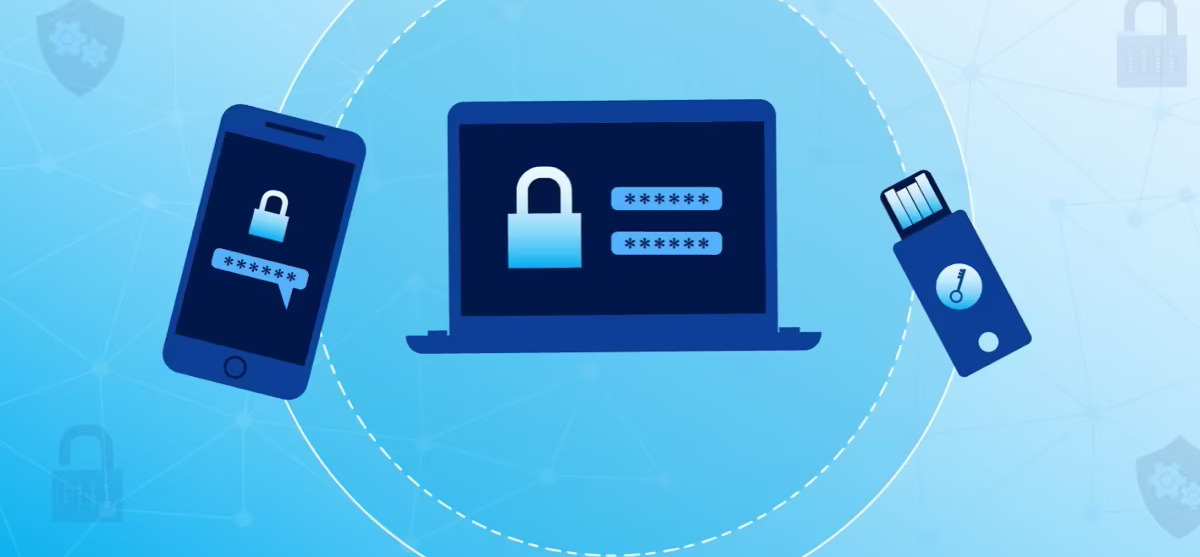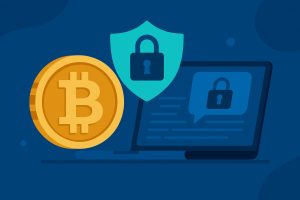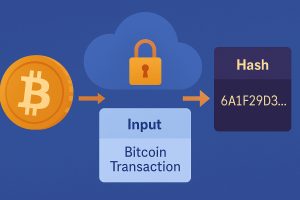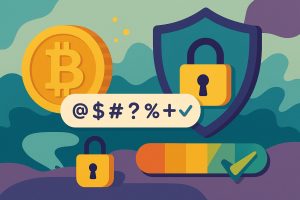Why Is Additional Security Important for Bitcoin Wallets?
Bitcoin is a digital asset that cannot be easily recovered once lost. Since there is no central authority overseeing it, Bitcoin wallet owners must implement strict security measures to safeguard their funds. One of the most effective ways to prevent theft is by using Two-Factor Authentication (2FA).
2FA adds an extra layer of security beyond just a password. This means that even if a hacker steals your password, they still won’t be able to access your Bitcoin wallet without a second verification code. It’s a powerful way to protect your digital assets from cyber threats.
In addition to preventing hackers, 2FA also helps protect against phishing attacks. By requiring a secondary verification method, it becomes much harder for unauthorized users to gain access to your account. In short, it’s a simple step with a significant impact on the safety of your Bitcoin holdings.
What Is Two-Factor Authentication and How Does It Work?
Two-Factor Authentication is a security feature that requires two separate methods of verification before an account can be accessed. Typically, this involves a static password and a dynamic code that changes every few seconds. When applied to Bitcoin wallets, it enhances the security of transactions and account access.
When a user attempts to log in with the correct password, the system immediately asks for the second authentication factor. This is usually sent as a one-time code via SMS, email, authenticator apps, or hardware keys. Without the correct verification code, access to the account is denied.
This mechanism is an effective way to prevent unauthorized access to Bitcoin wallets. Even if a hacker obtains a user’s password, they still cannot log in without the second security key, which changes automatically.
Types of Two-Factor Authentication for Bitcoin Wallets
There are several types of 2FA that can be used to protect Bitcoin wallets. The most basic is SMS-based authentication, where a verification code is sent to the registered mobile number. While convenient, it has vulnerabilities since hackers can hijack accounts through SIM-swapping attacks.
Authenticator apps like Google Authenticator and Authy provide a more secure alternative. Instead of sending a code via SMS, the app generates a time-sensitive verification code that changes every few seconds. Since this does not rely on mobile networks, it is much harder for hackers to intercept.
For the highest level of security, hardware security keys like YubiKey can be used. This type of authentication requires a physical device to log in, making it nearly impossible for remote attackers to gain access.
Set Up 2FA Your Bitcoin Wallets
Setting up Two-Factor Authentication is a straightforward process that takes only a few minutes. First, go to the security settings of your Bitcoin wallet and look for the 2FA options. Many wallets offer different authentication methods, such as SMS codes, authenticator apps, and hardware keys.
If using an authenticator app, download Google Authenticator or Authy, then scan the QR code provided by your wallet. This will allow the app to start generating one-time codes that will be required for each login attempt.
If using a hardware security key, connect it to your device and follow the instructions to link it to your Bitcoin wallet. Once 2FA is set up, every login attempt will require additional authentication before access is granted.
The Risks of Not Using 2FA
Without Two-Factor Authentication, the risk of hacking significantly increases. Hackers commonly use phishing techniques to steal user passwords. Without an extra security layer, they can easily access a Bitcoin wallet.
Many cryptocurrency theft incidents have occurred due to the lack of 2FA. For example, many users have lost substantial amounts of Bitcoin after falling victim to phishing scams where attackers replicated the login page of their wallet provider.
Besides phishing, malware also poses a threat. If a computer is infected with a keylogger, the user’s password can be captured and used to access the wallet. However, if 2FA is enabled, this alone would not be enough to compromise the account.
Limitations of Two-Factor Authentication
While 2FA significantly enhances security, it is not foolproof. SMS-based 2FA can be bypassed through SIM-swapping attacks, where a hacker gains control of a victim’s mobile number and receives the verification codes.
Authenticator apps are more secure, but if you lose your phone without backup codes, you could lose access to your Bitcoin wallet. To prevent this, it is crucial to store backup recovery options in a safe place.
Hardware security keys are considered the strongest 2FA method, but they can be lost or damaged. If not handled properly, users may have difficulty regaining access to their wallets.
Examples of Bitcoin Wallets That Support 2FA
Many Bitcoin wallets have built-in support for Two-Factor Authentication. For example, Coinbase and Binance both support Google Authenticator, Authy, and hardware security keys. Millions of users rely on these features to protect their assets.
For hardware wallets like Ledger and Trezor, there are also options to add 2FA for extra security. Through multi-signature authentication, a higher level of protection can be implemented for accessing funds.
Meanwhile, mobile wallets like Trust Wallet and Mycelium support biometric authentication, such as fingerprint and face recognition, as an additional form of 2FA.
How Does 2FA Improve the Security of Bitcoin Transactions?
Beyond protecting login credentials, 2FA plays a major role in securing Bitcoin transactions. In many Bitcoin wallets, additional verification is required before funds can be sent. This means that even if a hacker gains access to an account, they still cannot withdraw Bitcoin without the secondary authentication.
Another benefit is protection against account takeovers. With 2FA in place, even if login credentials are leaked in a data breach, attackers will still be unable to access the Bitcoin wallet.
Due to these advantages, more and more users are adopting 2FA as part of their Bitcoin security strategy. As the value of Bitcoin continues to rise, having protection against hacking attempts becomes even more crucial.
Why Should You Enable Two-Factor Authentication Now?
In the world of cryptocurrency, security cannot be taken lightly. As cyber threats continue to increase, every Bitcoin user must ensure they have adequate protection against hacking attempts.
Enabling 2FA is a simple yet effective way to reduce the risk of unauthorized access to Bitcoin wallets. While it is not 100% foolproof, it makes hacking and theft significantly more difficult.
If you hold Bitcoin, there is no reason not to enable Two-Factor Authentication. It is a quick and effective way to protect your cryptocurrency investments.
















No Responses